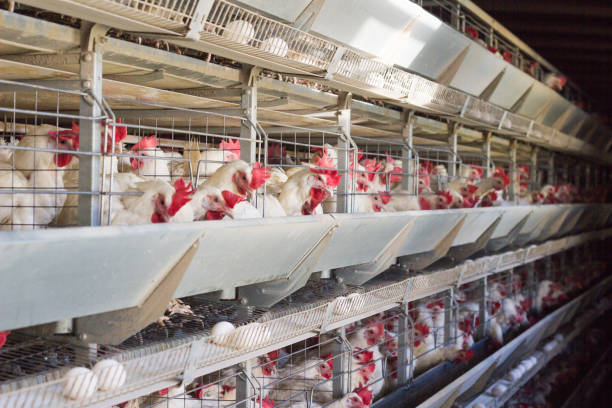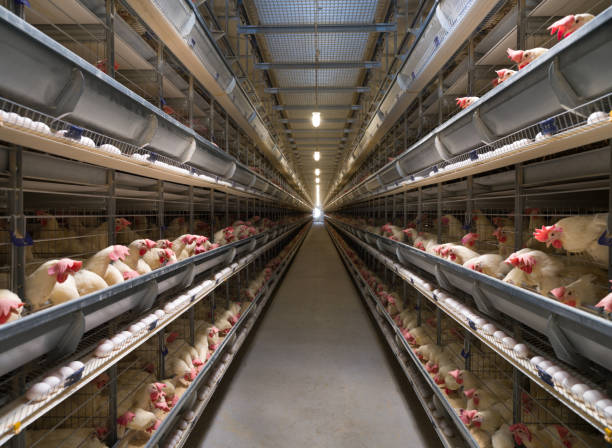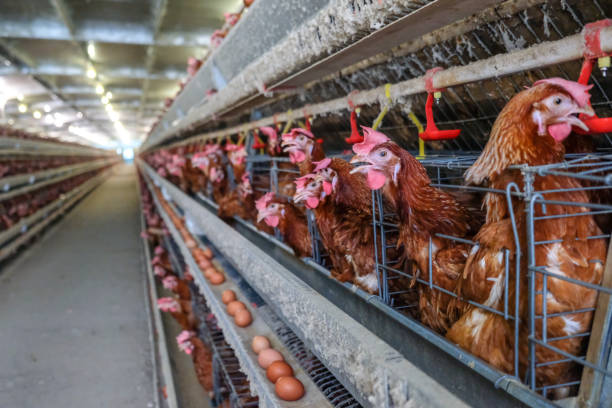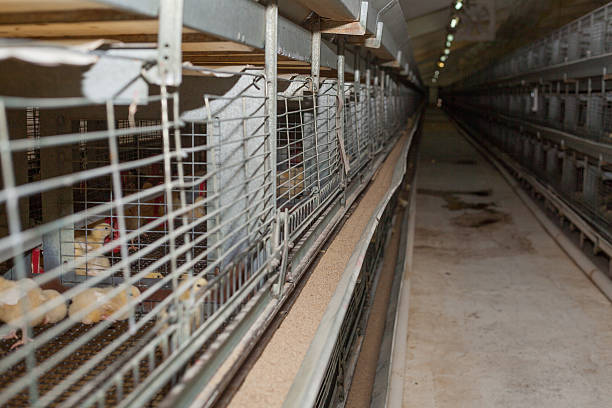
Equipping Your 90,000-Hen Farm: Choosing the Right Egg-Laying Cages
Equipping Your 90,000-Hen Farm: Choosing the Right Egg-Laying Cages
So, you’re gearing up to run a 90,000-hen egg-laying farm? That’s a serious operation, and choosing the right egg-laying cages is absolutely crucial for success. These cages aren’t just metal structures; they’re the homes for your hens, and their welfare directly impacts egg production, efficiency, and ultimately, your bottom line. This article dives deep into the factors you need to consider when making this vital decision, ensuring your farm thrives.
Understanding the Landscape: Different Types of Egg-Laying Cages
Before diving into specifics, let’s outline the main types of egg-laying cages you’ll encounter:
Conventional (Battery) Cages: These are the traditional cages you likely picture. They’re designed for high-density housing, maximizing the number of hens per square foot. While they offer good egg collection efficiency and ease of management, they often face criticism regarding hen welfare due to limited space and behavioral restrictions.
Enriched Cages (Furnished Cages): These cages are designed to address the welfare concerns associated with conventional cages. They provide hens with more space, perches, nesting areas, and scratching pads to encourage natural behaviors. While they require a larger initial investment, they can lead to improved hen health and potentially higher egg quality, also complying with stricter regulations in some regions.
Aviary Systems (Cage-Free): While not technically “cages,” aviary systems represent a cage-free alternative. Hens roam freely within a large, enclosed area, accessing multiple tiers for roosting, feeding, and laying. These systems offer excellent welfare benefits but require more complex management and can present challenges in terms of egg collection, hygiene, and disease control.

Semi-Automatic and Fully Automatic Layer Cages: These cages are used when the number of chickens raised is large and labor is saved. Full automation includes automatic feeding system, automatic egg collection system, automatic manure removal system, and automatic environmental control system.
Key Considerations for Your 90,000-Hen Farm
Now, let’s delve into the critical factors that will influence your choice of egg-laying cages for your large-scale operation:
Hen Welfare: This is paramount. Healthy and happy hens lay more eggs. Consider the space allowance per hen, the availability of enrichment features, and the overall impact of the cage system on their natural behaviors. Research suggests that enriched cages generally lead to better bone health, reduced feather pecking, and improved overall well-being compared to conventional cages.
Egg Production & Quality: The primary goal is to maximize egg production while maintaining high egg quality. Think about egg collection efficiency (manual vs. automated), egg breakage rates, and the impact of the cage environment on eggshell strength and cleanliness. Some cage designs incorporate features like sloped floors for gentle egg roll-out, minimizing cracks and dirt.
Farm Space & Layout: A 90,000-hen farm requires significant space. Choose a cage system that optimizes space utilization while providing adequate ventilation and access for workers. Consider the dimensions of the cages, the aisle widths needed for feeding and egg collection, and the overall building layout.
Manure Management: Efficient manure removal is crucial for hygiene, disease control, and odor reduction. Look for cage systems with automated cleaning belts or manure scrapers. Consider the frequency of manure removal and the disposal method you’ll use (e.g., composting, anaerobic digestion). Poor manure management can lead to ammonia buildup, respiratory problems in hens, and environmental concerns.
Ventilation and Environmental Control: Maintaining optimal temperature and humidity levels is essential for hen health and egg production. Ensure the chosen cage system allows for adequate air circulation and integrates well with your ventilation system. Automatic environmental control systems are a great choice. Consider factors like insulation, air inlets, and exhaust fans.
Labor Costs: Labor is a significant expense in egg production. Evaluate the level of automation offered by different cage systems. Automated feeding, egg collection, and manure removal can significantly reduce labor requirements, but come with higher initial costs. Calculate the payback period based on your labor cost savings.
Initial Investment & Operating Costs: Cage systems vary widely in price. Consider the initial cost of the cages, installation expenses, and ongoing operating costs such as electricity, water, and maintenance. Conduct a thorough cost-benefit analysis to determine the most economical option over the long term.
Regulations & Market Demands: Stay informed about animal welfare regulations in your region and the demands of your target market. Some areas have banned conventional cages and require enriched cages or cage-free systems. Consumer preferences are also shifting towards more ethically produced eggs. Choose a cage system that meets current regulations and anticipates future trends.
Biosecurity Measures: Protecting your flock from disease outbreaks is paramount. Select a cage system that facilitates cleaning and disinfection. Consider features like solid partitions between cages to prevent the spread of pathogens. Implement strict biosecurity protocols for personnel, equipment, and incoming materials.
Making the Right Choice: A Step-by-Step Approach
Equipping your 90,000-hen farm requires careful planning and a systematic approach:
Step 1: Define Your Goals: What are your priorities? Are you primarily focused on maximizing egg production, minimizing costs, or prioritizing hen welfare? Clearly define your objectives before evaluating different cage systems.

Step 2: Research Cage Options: Explore the different types of egg-laying cages available, considering their pros and cons in relation to your goals. Contact several reputable cage suppliers and request detailed information and quotes.
Step 3: Visit Existing Farms: If possible, visit other egg-laying farms that use different cage systems. Observe the hens’ behavior, evaluate the ease of management, and ask the farm owners about their experiences.
Step 4: Consult with Experts: Seek advice from poultry veterinarians, agricultural engineers, and other experts in the field. Their insights can help you make informed decisions and avoid costly mistakes.
Step 5: Conduct a Cost-Benefit Analysis: Compare the total costs and benefits of each cage system, considering factors like initial investment, operating costs, egg production rates, egg quality, and labor requirements.
Step 6: Consider Future Expansion: If you anticipate expanding your farm in the future, choose a cage system that can be easily scaled up. Modular designs are often a good option.
Step 7: Prioritize Reliability & Support: Select a cage supplier with a proven track record of providing reliable equipment and excellent customer support. Inquire about warranty terms, maintenance services, and the availability of spare parts.
Specific Advantages of Different Cage Systems
To help you further narrow down your options, let’s examine the specific advantages of each type of cage system:
Conventional Cages:
High stocking density, maximizing egg production per unit area.
Relatively low initial investment compared to other systems.
Efficient egg collection and easy monitoring of individual hens.
Enriched Cages:
Improved hen welfare due to increased space and enrichment features.
Reduced feather pecking and aggression.
Potential for higher egg quality.
Compliance with stricter animal welfare regulations.
Aviary Systems:
Excellent hen welfare, allowing for natural behaviors like foraging and dust bathing.
Strong consumer appeal, aligning with ethical egg production.
Opportunities for niche marketing and premium egg pricing.
The Importance of Automation
For a 90,000-hen farm, automation is not just a luxury; it’s a necessity. Automated systems can significantly reduce labor costs, improve efficiency, and enhance biosecurity. Consider the following automation options:
Automated Feeding Systems: These systems deliver feed to the hens at pre-programmed intervals, ensuring consistent nutrition and reducing feed wastage. They can be customized to provide different feed rations to different groups of hens.
Automated Egg Collection Systems: These systems collect eggs gently and efficiently, minimizing egg breakage and reducing labor costs. Conveyor belts transport eggs to a central collection point for packing and processing.
Automated Manure Removal Systems: These systems remove manure regularly, preventing ammonia buildup and reducing the risk of disease outbreaks. Belt or scraper systems are commonly used.
Automated Environmental Control Systems: These systems monitor and adjust temperature, humidity, and ventilation levels to maintain optimal conditions for hen health and egg production.
Beyond the Cage: Holistic Farm Management
While choosing the right egg-laying cages is crucial, it’s only one piece of the puzzle. Successful egg production requires a holistic approach to farm management, including:
Proper Nutrition: Provide your hens with a balanced diet that meets their specific nutritional needs at different stages of their lives. Consult with a poultry nutritionist to formulate optimal feed rations.
Water Management: Ensure your hens have access to clean, fresh water at all times. Implement a water sanitation program to prevent the spread of disease.
Disease Prevention: Implement a comprehensive vaccination program and biosecurity protocols to protect your flock from disease outbreaks.
Regular Monitoring: Monitor your hens’ health and behavior closely, looking for signs of illness or stress. Address any problems promptly.
Record Keeping: Maintain accurate records of egg production, feed consumption, mortality rates, and other key performance indicators. This data will help you identify areas for improvement and make informed management decisions.
Partnering with the Right Supplier
The cage supplier you choose will be a long-term partner in your egg production business. Select a supplier that offers:

High-Quality Products: The cages should be durable, well-designed, and manufactured to strict quality standards.
Competitive Pricing: The price should be competitive, but don’t sacrifice quality for cost savings.
Excellent Customer Support: The supplier should provide timely and helpful support, including installation assistance, training, and ongoing maintenance services.
A Strong Reputation: Choose a supplier with a proven track record of customer satisfaction.
Conclusion
Equipping your 90,000-hen farm with the right egg-laying cages is a significant investment that will impact your business for years to come. By carefully considering the factors outlined in this article, you can make an informed decision that maximizes hen welfare, egg production, and profitability. Remember to prioritize hen welfare, choose a cage system that suits your farm’s layout and management style, and partner with a reputable supplier who will provide ongoing support. With careful planning and execution, you can build a successful and sustainable egg-laying operation.
